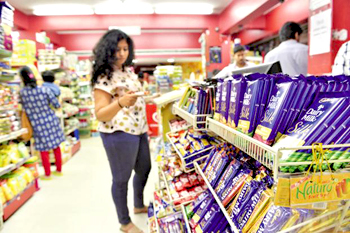New Delhi, May 9: India’s food safety regulator Monday proposed a tax on all packaged foods with high fat, sugar and salt content. The regulator also proposed strict labelling norms for such products and a bar on advertising them on children’s television channels.
 The Food Safety and Standards Authority of India (FSSAI), however, did not specify the quantum of tax that it wants imposed. FSSAI chief executive officer Pawan Kumar Agarwal did not respond to calls.
The Food Safety and Standards Authority of India (FSSAI), however, did not specify the quantum of tax that it wants imposed. FSSAI chief executive officer Pawan Kumar Agarwal did not respond to calls.
The FSSAI’s Monday notification is based on recommendations of an 11-member expert group the regulator had set up after a Delhi High Court order in June 2015.
FSSAI said such products are harmful for kids and can cause diabetes, hypertension and cardiovascular diseases, adding that advertisements of such products should be banned on children’s television channels, and during shows targeted at children. The regulator has also suggested that celebrity endorsements of such foods should be ‘discouraged’ and promotions and advertisements of these food items on social media should be restricted.
“Imposing additional tax on the purchase of commodities such as pre-packaged foods with high salt and fat content, sugar sweetened beverages, etc, can be a pragmatic approach to reduce the rising burden of chronic diseases among Indian population. Imposing excise tax on unhealthy eating products can be an endeavour to bring about positive health effects among population. This exercise can be of great importance in supporting nutrition-related programmes by the means of profit generated from taxing unhealthy food products,” added the FSSAI notification.
Companies such as ITC Ltd, Dabur Ltd, Nestle India Ltd and Coca-Cola India Pvt. Ltd did not want to comment on the issue.
Packaged foods are among the top advertisers for television channels. “For certain products, kids channels are the primary source of revenue. But many responsible packaged food brands are already following the norm of not advertising unhealthy foods on kids channels. The impact won’t be more than 10% to a kids channel at best,” said Ashish Bhasin, chairman and chief executive, Dentsu Aegis Network South Asia.
Companies should disclose “total calories, amounts of carbohydrate, sugars, fat, protein, sodium, dietary fibre” and “trans fat added” on the labels, the FSSAI notification added.
The regulator has urged companies to voluntarily reformulate their food products to reduce fat, sugar and salt.
According to FSSAI, almost all processed foods come under the ambit of the proposed additional tax. The product list include: chips, samosa, vada, pakoras, deep fried Indian snacks, French fries, many types of sweet, fatty or salty snack products; ice cream, chocolates, candies (confectionery); burgers and hot dogs; poultry and fish nuggets‘ or sticks‘ (fingers‘); mass-manufactured breads, buns, cookies (biscuits); breakfast cereals; pastries, cakes, cake mixes; energy bars; preserves (jams), margarines; desserts; canned, bottled, dehydrated, packaged soups, noodles; sauces; meat, yeast extracts; soft, carbonated, cola, energy drinks; sugared, sweetened milk drinks, condensed milk, sweetened including fruit yoghurts; fruit and fruit nectar drinks; instant coffee, cocoa drinks; no-alcohol wine or beer; pre-prepared meat, fish, vegetable, cheese, pizza, pasta dishes; infant formulas, follow-on milks, other baby products; health, slimming products such as powdered or fortified meal and dish substitutes.




Comments
Add new comment